Those who start a migraine diet are often surprised to find their meal replacements and protein shakes have to go out the window. What makes these protein powders a potential migraine trigger? And what is the best protein powder for migraine sufferers? Well, the answer is kind of tricky.
Some people will tell you protein powder is filled with MSG and that’s not entirely accurate. What makes this so confusing is migraine brains tend of be sensitive to glutamate in general, whether it is MSG (which is processed) or naturally occurring glutamate, like in mushrooms.
Even if a protein powder doesn’t contain sugar substitutes or additives and is in a natural form, some people might find they still have issues with migraine attacks.
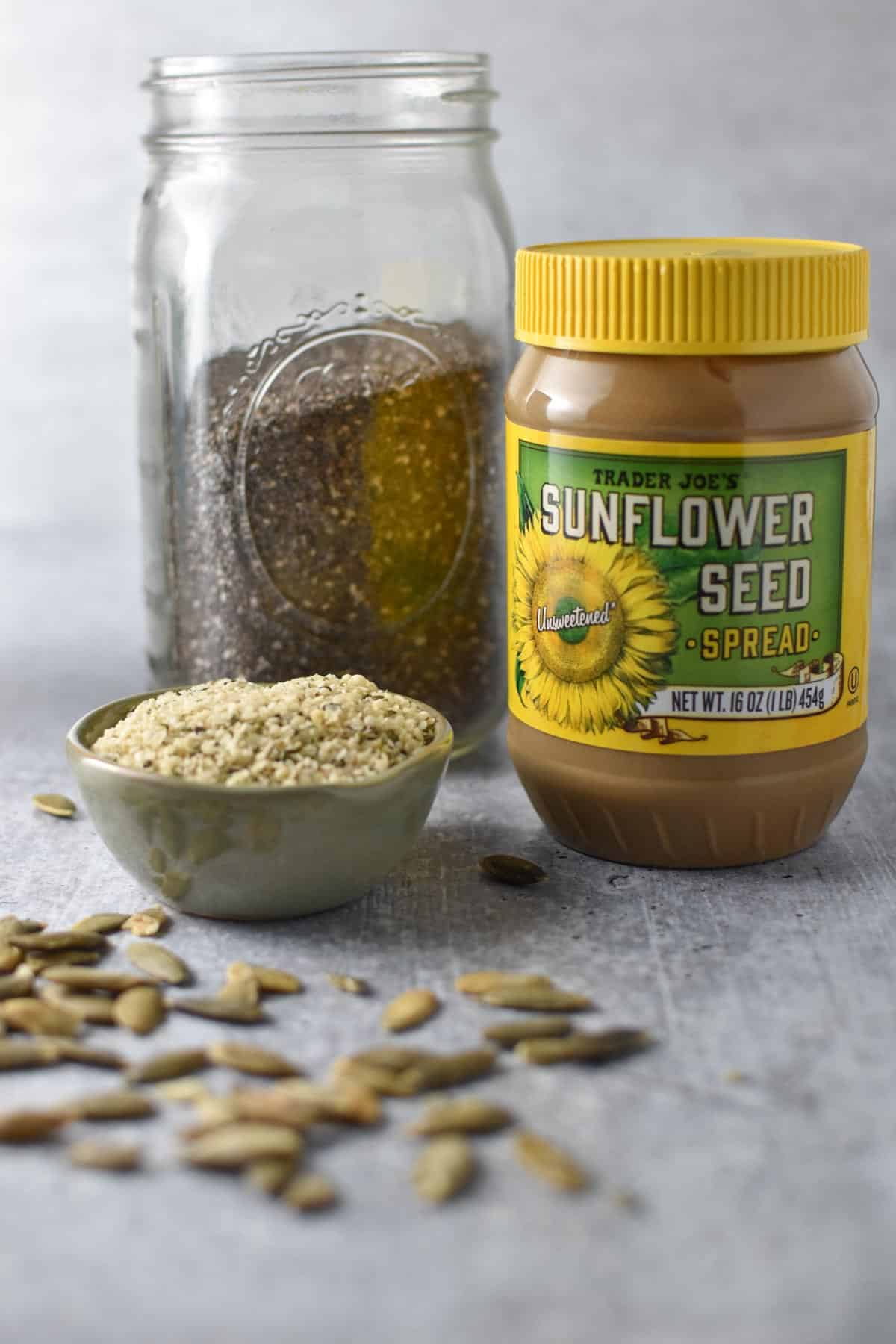
Jump to:
Whey Protein and Migraines
For people following a migraine diet like Heal Your Headache, there are certain forms of glutamate that should be avoided during the elimination period. Often these names come with “protein” or “isolate” at the end of them.
For instance, you’ll see these in many common protein powders and diet shakes:
- Whey Protein
- Soy Protein Isolate
- Hydrolyzed Protein
Whey protein can actually trigger migraine attacks in some people. This is because the processed versions of these items are high in glutamate and act similar to MSG in the brain of someone who is sensitive, like people with certain neurological disorders.
Sensitivity to glutamate can vary from person to person. Some find they are able to tolerate natural items higher in glutamate, like mushrooms or tomatoes, but not anything processed, like protein isolates.
Others find they’re sensitive to almost everything higher in glutamate. If you find yourself reacting to foods naturally high in glutamate, you may even have an issue with some of the items below. Reading labels and checking glutamic acid content can help.
What About Collagen Powder?
There are some forms of protein that fall into a bit of a grey area with migraine diets, like collagen powder.
A few years ago, I used Vital Proteins collagen powder daily because it was extremely trendy and I had heard amazing things about it helping with joints and skin. When I checked the ingredients, all seemed to be ok. All it contained was collagen powder in the ingredients.
I didn’t noticed that it triggered my symptoms initially, but this was also in my process of eliminating foods so I was still dizzy everyday. As I learned more about the migraine and glutamate connection, I took note of the amino acid panel on the back of the collagen peptides label and realized it contained a high amount of glutamic acid - around 2,200 mg. At that point, I realized it was probably best for me test out eliminating this item from my diet to see if it helped.
Now I did this combined with other treatments, but I noticed my migraine threshold increased after I stopped using collagen peptides. I no longer had that mild dizziness after starting each morning with it in my smoothie.
If you’re in a state of chronic migraine or get attacks frequently, I recommend avoiding collagen peptides unless it’s prescribed by a physician. It’s always something you can re-introduce at a later date to see if you have any sort of reaction.
Pea Protein and Migraine
Pea protein is found in a lot of protein powders as well as some milk alternatives, like Ripple. If you’re just starting a migraine diet, it should be eliminated in the initial phase.
While shelled peas are allowed on a migraine diet (except pods, like snow peas), peas are naturally higher in glutamate like mushrooms, walnuts, malted barley, and aged cheese and meat.
They’re also on the higher end of tyramine levels. Again, if you find yourself sensitive to these fresh foods at the very basic level, having a processed version could be what lowers your threshold enough for attacks to occur. This is especially important if you’re consuming daily!
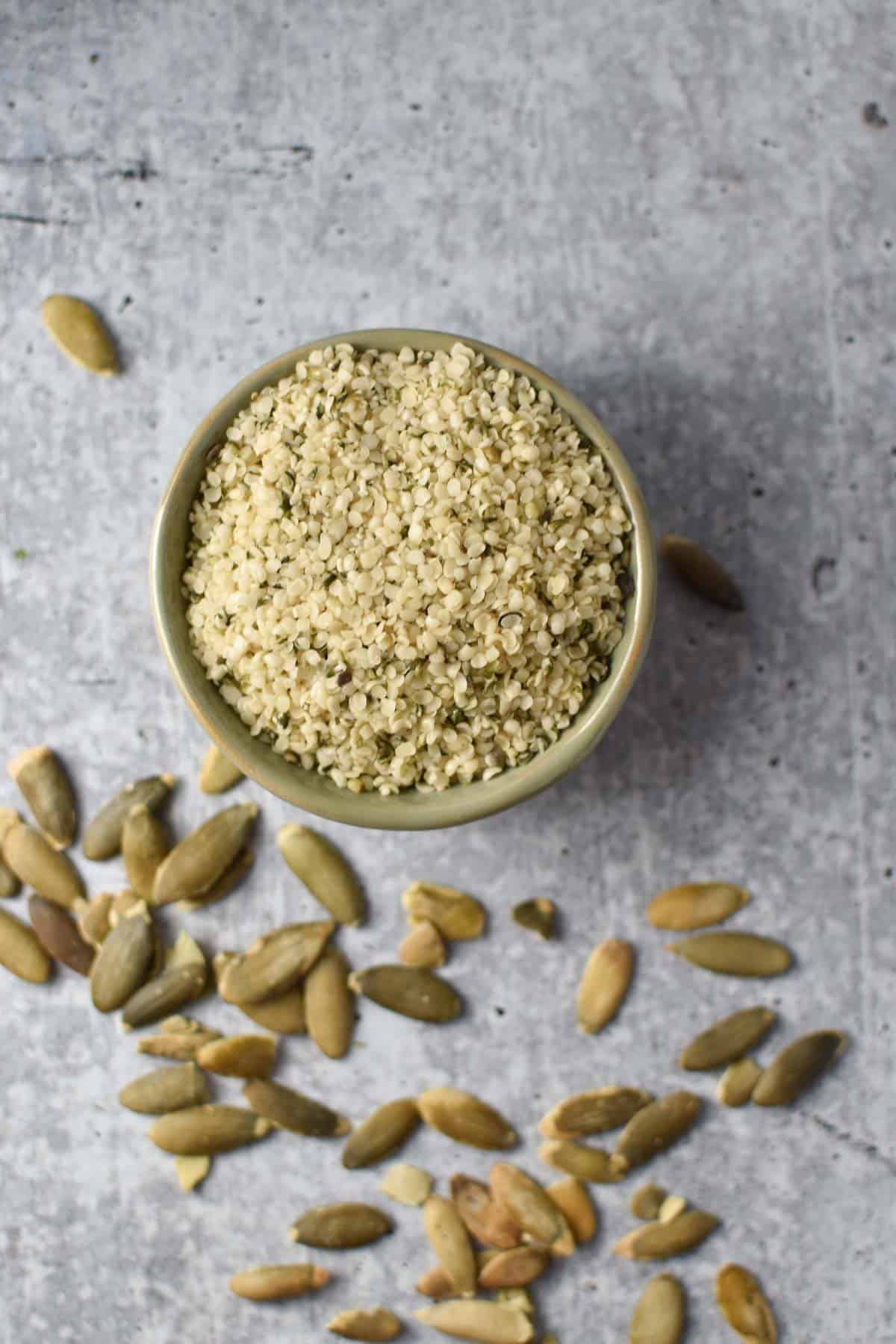
Protein Powder Alternatives for Migraine Diets
We know that managing blood sugar fluctuations can play a major factor when it comes to migraine. Avoiding spikes and drops can help us to avoid triggering an attack.
While smoothies are extremely easy to consume, especially on high pain days, the amount of sugar in the fruit alone can cause a spike in blood sugar. Therefore it’s recommended to pair consumption with a good amount of protein and fat to balance out any fluctuations.
You’ll notice I like to add sunflower seed butter, cottage cheese, and hemp seeds to a lot of my smoothie recipes. This is exactly why I do it!
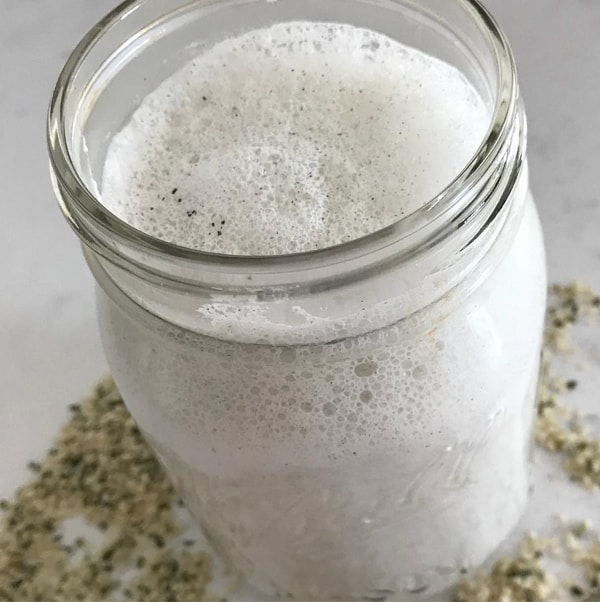
Homemade Hemp Milk
Even making your own hemp milk can increase the amount of protein to your smoothies. I set out to create my own hemp milk and I never realized how easy it actually is. This works great if you own a high speed blender like a Vitamix.
My recipe for hemp milk is:
• ½ cup shelled, raw hemp seeds
• 3 cups filtered water
• 1tsp lucuma powder and vanilla to sweeten
Blend on high for about a minute and chill. No need to strain!
Protein Amounts in Seeds
There’s really no rule that says you have to get protein from a powder and if you’re mixing in with smoothies, chia pudding, or overnight oats, the below are great ways to make them more substantial.
- Sunflower seeds contain 6-7grams protein per ¼ cup.
- Hemp seeds contain 11g protein per 2-3 tablespoons.
- Chia seeds contain 4 grams protein per 1 ounce serving.
- Flax seeds contain about 2 grams protein per tablespoon.
- Buckwheat contains 6 grams per cup.
Also don't miss my vegetarian protein chart for amounts from vegetables, beans, and more.
Protein Powders for Migraine Sufferers
The below seem to be the best protein powders for migraine sufferers.
- Pumpkin - This is my personal favorite! Sprout Living brand offers 20 grams of protein with a serving. I use it in my protein smoothies, baking, Pepita protein bars, and more! Get 20% off with code THEDIZZYCOOK20.
- Seed Proteins - Naked as a combo one with pumpkin seed, watermelon seed, chia, and sunflower. Epic protein is another, although it does contain yellow pea, it doesn't have pea protein isolate.
- Rice - I used to recommend rice protein to people, upon investigation for this article it does seem like the ones available have a really high amount of glutamic acid as well. Although rice is migraine diet friendly, it may be best to start with other options available.
- Hemp - This is the lowest in glutamic acid and also tyrosine, the amino acid which tyramine is derived. If you’re highly sensitive to glutamate, this will be your best bet for a protein powder. I like Nutiva, but Hemp Yeah is good too.
Sunflower Seed - Another one from Sprout Living, this contains 15 grams of protein. Get 20% off with code THEDIZZYCOOK20. Add a scoop or two to my sunbutter balls.
Finally, my recommendations can only go so far. It does take a little bit of trial and error to find out what works best with your body, but hopefully this gives you some ideas for added protein!
Other Options for Protein
A lot of us get really hung up on protein powders because they're an easy and fast way to get it in, but they're not the only way.
- Cottage cheese contains 25 grams per cup and is great in a breakfast bowl.
- Adding ground meat (turkey, beef, or chicken) to eggs can up the protein content.
- Egg whites are a great way to add extra protein without extra fat.
High Protein Recipes
These high protein breakfast recipes are made with and without protein powders for a delicious way to start the day.

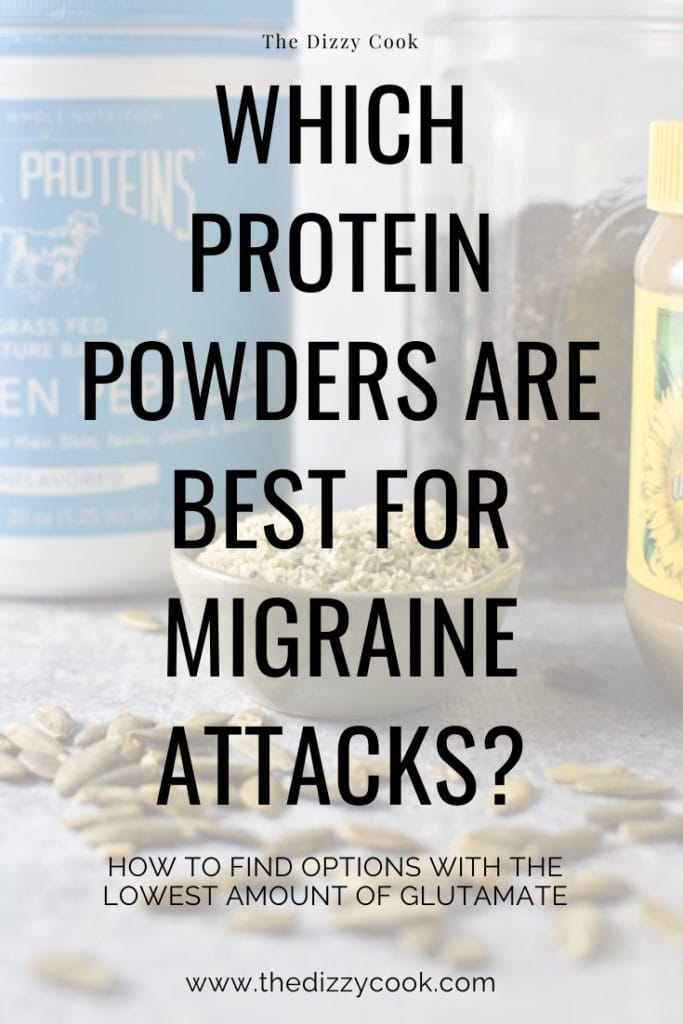
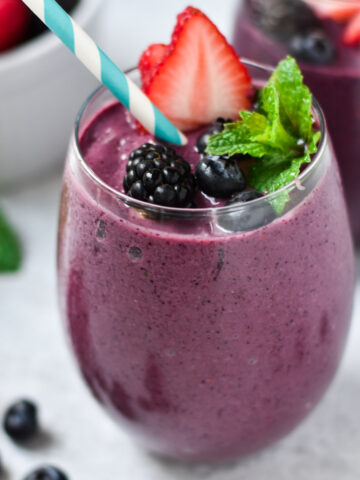
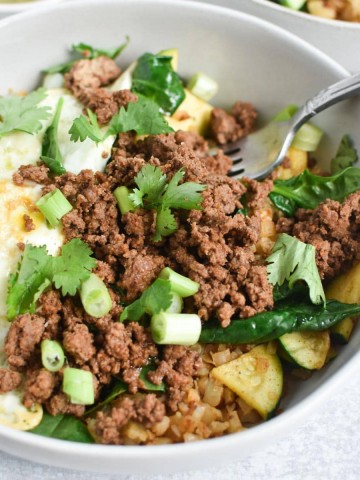
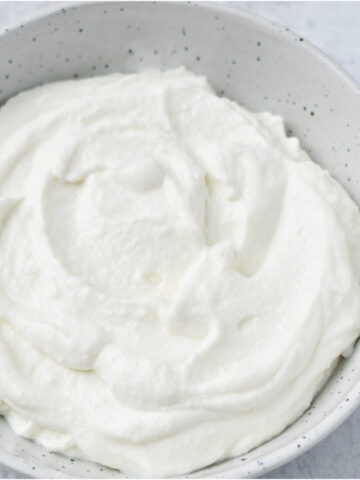
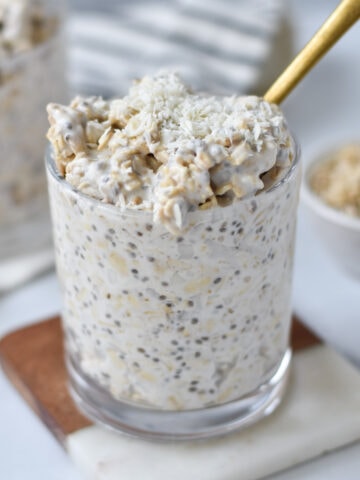

This is amazing information! It explains so much about why "pure" protein powders give me migraines. Even breathing the amount of protein powder dust that gets released when someone scoops it out triggers a migraine.
I was always afraid of hemp and chair, thinking they would be bad for me, but maybe they would actually be good.
I wish more people knew about it. I started making the connection for myself too!
This is great information. Thank you, as always for staying on top of various options. I also keep trying to get more protein for blood sugar stabilizing. I wish I could use collagen for better hair, but it triggers me. I'm definitely going to try the pumpkin seed powder.
so the answer to the title of the article is "none"? you didn't actually answer the question. i see alternatives. is that the only acceptable protein "powder"?
Hey Randy, I'm not sure what you mean. It is under this tab here. I have a few different ones linked depending on people's preferences.
Hi Alicia thanks for the info I found this very informative! I just wondered is any canned salmon ok on the migraine diet and also would hemp protein powder be ok? I’m just looking for an alternative to my pea protein as it seems to be a trigger for me. Thanks heaps Julia
Hey Julia - yes canned salmon is ok and then I have a hemp protein linked above, right here!
Hi Alicia - I appreciate your practical information. I'm starting the quest now, having learned that my ongoing "sinus" headaches are likely migraines (who knew there were so many presentations of migraines!).
I'm having the hardest time figuring out how to get protein without always eating meat, so your info on this page is helpful.
Here's my latest confusion in research as I plot out starting my elimination diet, with contradictory (I think) info gleaned from different reputable sources.
Some seeds are listed as a good source by you but are in the AVOID category on the Johns Hopkins Migraine Diet handout I received (though I don't see it on the current JH Headache Center site). And then I found this handy MYFOODDATA table: https://tools.myfooddata.com/nutrient-ranking-tool/glutamic-acid/nuts-and-seeds/lowest/grams/common/no which lists sunflower and other seeds as having higher glutamine than soy sauce per 100 g. So now I’m really confused.
Hi Alicia.
Firstly let me say what an amazing person you are sharing all the information on vestibular headaches. I appreciate it so much. I’m about to purchase your recipe book.
I have recently been diagnosed and am about to start the migraine diet. I have celiac disease ( diagnosed 2 years ago) and now have to tweak things to adhere to the new way of eating. Is canned wild caught Alaskan salmon ok to eat. It’s not smoked or cured. Also not sure about rocket?
Hey - yes, canned salmon would be ok! Rocket is fine. I have a rocket and pear salad!
I have a very severe form of rare migraine disorder and while trying to come up with ways to help me I came across your article . Very helpful thank you. Any additional advise you could through my way would help .
Hey Teri, I have lots of other posts on here, especially the magnesium one may be helpful. It has been very popular. If the website is tough to read, I have a youtube that you can listen to as well. A lot of similar info.
Hi Alicia,
Thank you for your work! Is there a supplemental collagen source that is safe to protect against headaches you recommend?
Beth
Unfortunately not, but I'd speak with your doctor. They may think the benefits of collagen outweigh the potential risk of it being a personal trigger for you. Unfortunately if it is a trigger for you like it is for me, you may just need to find other supplements that can help with what you need to be taking it for.
How can you calculate glutamate levels in a product? is it a calculation? or will it be listed on the label of the product? thanks!
Hi John - I don't know that you could use this site to calculate in a specific product, but it lets you put in the "nutrient" you are trying to calculate and then one or more food groups, which then lists a fairly comprehensive list.
https://tools.myfooddata.com/nutrient-ranking-tool/glutamic-acid/all/lowest/grams/common/no
When I clicked their "about" link, it seems to be a reputable, science based site.
Hi Alicia,
I'm so glad I found your site. I recently started the HYH diet and want to be sure I'm not still eating any triggers. Are ultra-filtered milks (high protein, lower sugar) such as Fairlife or HEB Mootopia safe on HYH? I like them to help add protein and prevent a sugar spike but don't know if they're too processed from a glutamate perspective. They don't list any whey protein separately in their ingredients.